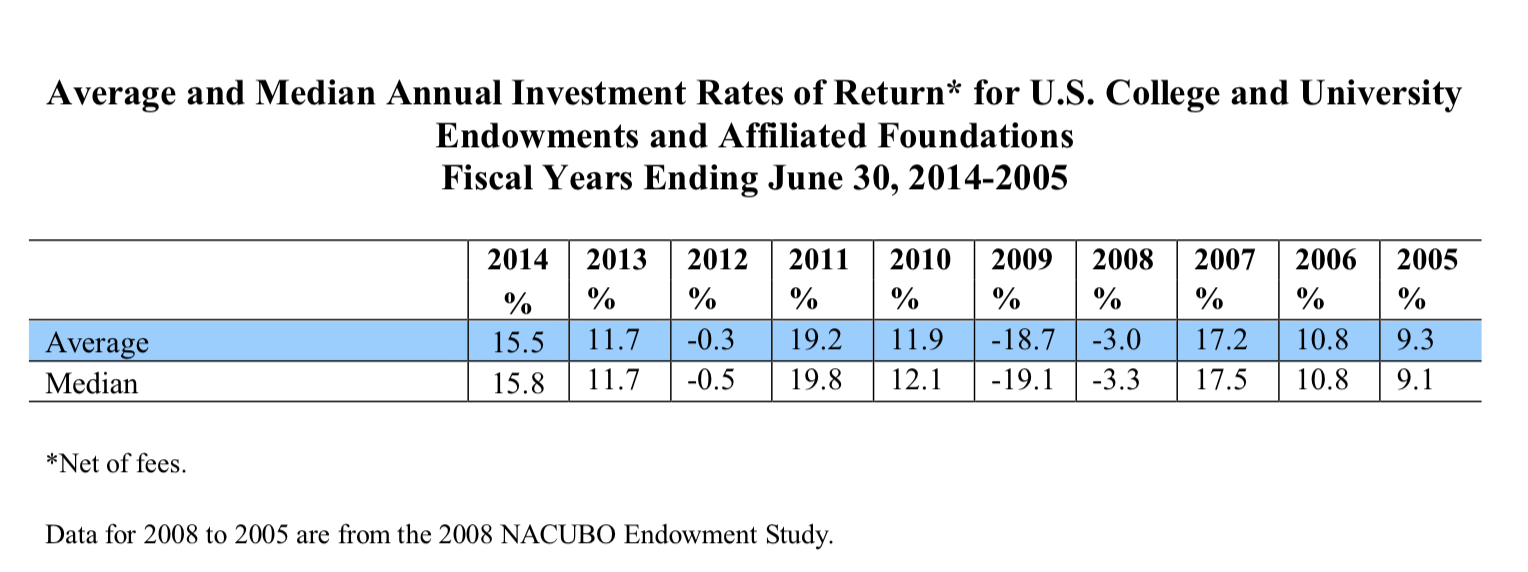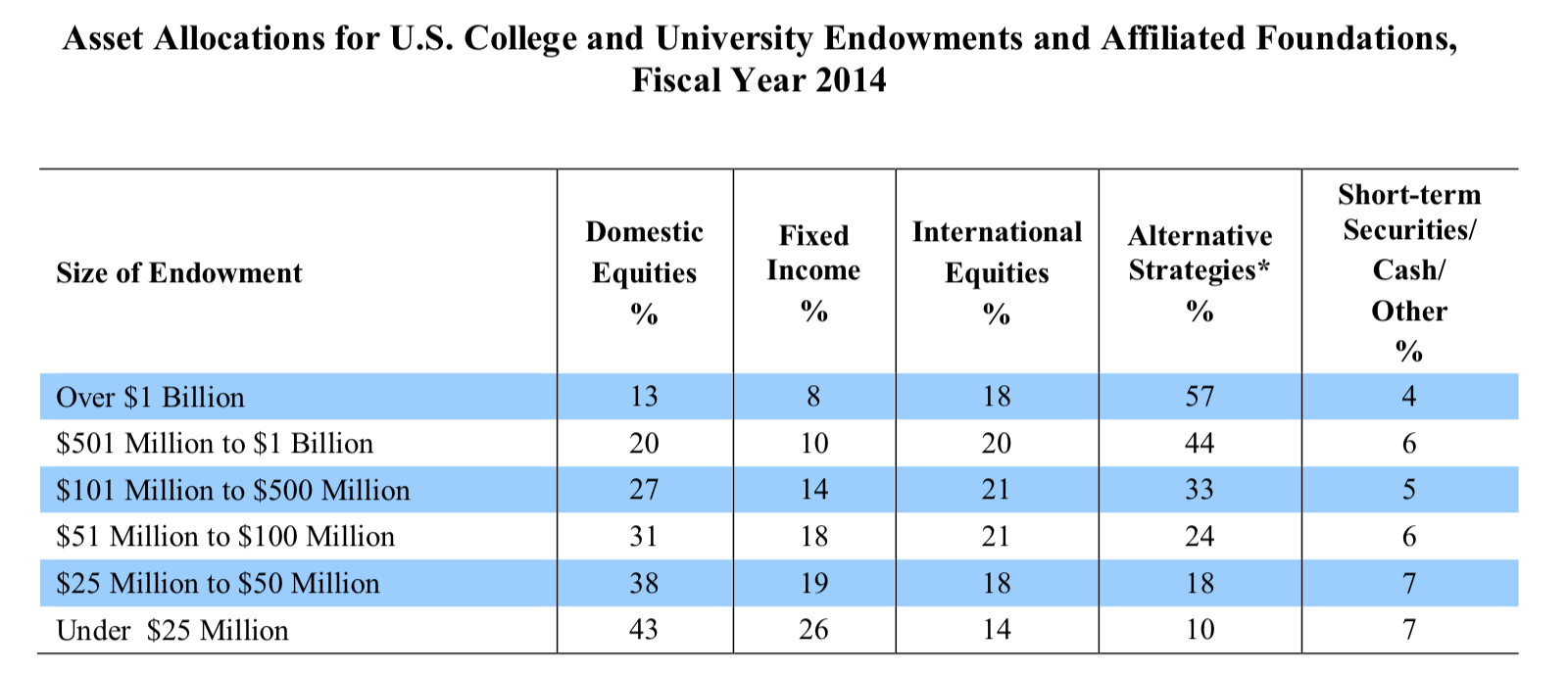US endowments recorded an average return of 15.5% in fiscal year 2014 and increased outsourcing and their focus on risk management, according to NACUBO and Commonfund.
The joint study of 832 institutions representing $516 billion in assets found 2014’s figures exceeded the previous year’s 11.7% average gain, driven by a robust domestic equity market.
Institutions also enjoyed strong longer-term returns. Three-year net returns averaged 9%, while average five-year and 10-year returns came in at 11.7% and 7.1% respectively.
 (Source: 2014 NACUBO-Commonfund Study of Endowments)
(Source: 2014 NACUBO-Commonfund Study of Endowments)
The data revealed the largest endowments—those with assets exceeding $1 billion—beat their smaller counterparts by 90 to 170 basis points.
While asset allocation changed little from 2013, there was a small decline in exposures to alternatives—from 53% to 51% in 2014—and a 1% bump in US equities to 17%.
More specifically, larger institutions had the highest allocations to private equity and hedge funds, whereas smaller funds with less than $25 million had the most exposures to domestic equities at 43%.
 (Source: 2014 NACUBO-Commonfund Study of Endowments)
(Source: 2014 NACUBO-Commonfund Study of Endowments)
There was a hike in outsourcing among all endowments, the report said, with 43% of respondents stating they have “substantially outsourced the investment management function.” In 2013 and 2012, the percentage of outsourcing was 40% and 38% respectively.
Institutions relied slightly less on consultants in 2014, with 82% of respondents using their services compared with last year’s 85%.
The NACUBO-Commonfund study revealed endowments turned their attentions to strengthening their risk management in 2014.
“Institutions appear to be remaining vigilant with an eye to avoiding a repetition of their experience in the financial crisis of 2007-2009,” John Griswold, Commonfund’s executive director, said.
Nearly 60% of respondents said they employed risk limits while more than three-quarters said they used volatility calculations. Some 61% said they utilized measures such as alpha and beta and almost half of the institutions reported using stress testing or scenario analysis.
However, implementation of environmental, social, and governance investing was still lagging, the study found, with just 7% stating they would consider integrating it into their investment policies.
According to NACUBO and Commonfund’s data, Harvard University had the largest endowment with $35.9 billion in assets under management. The University of Texas System and Yale University followed closely with $25.4 billion and $23.9 billion respectively.
Related Content: Endowments Turn Skeptical Eye on Private Equity, US Endowments Lag Public Pension Returns, Again
